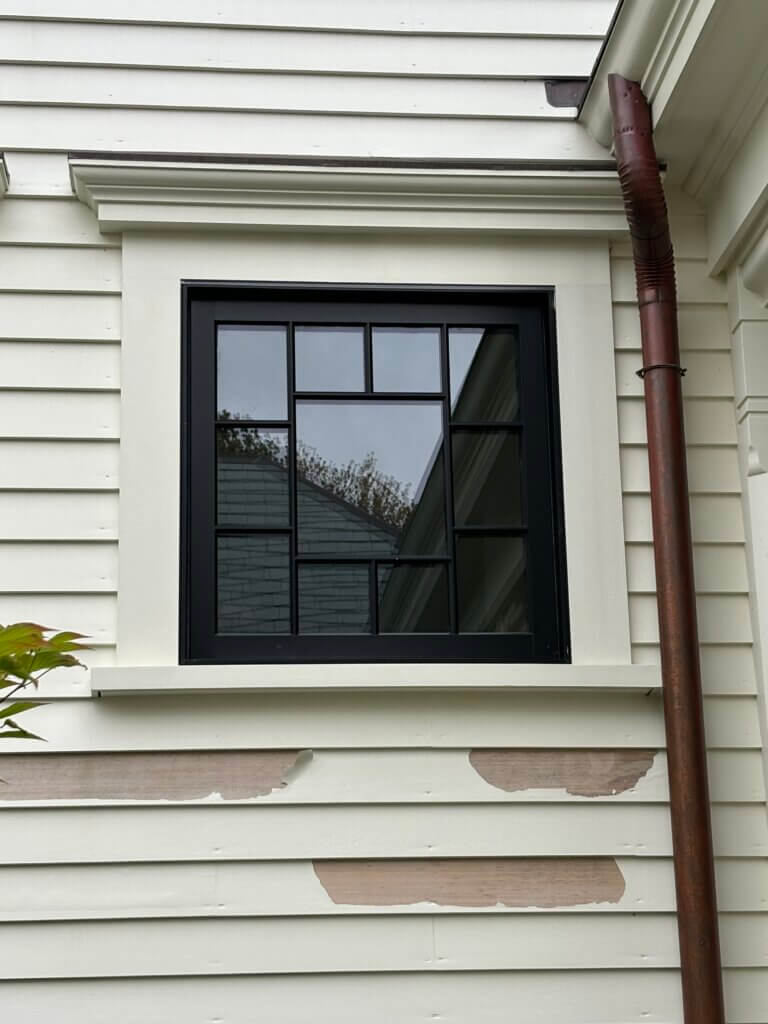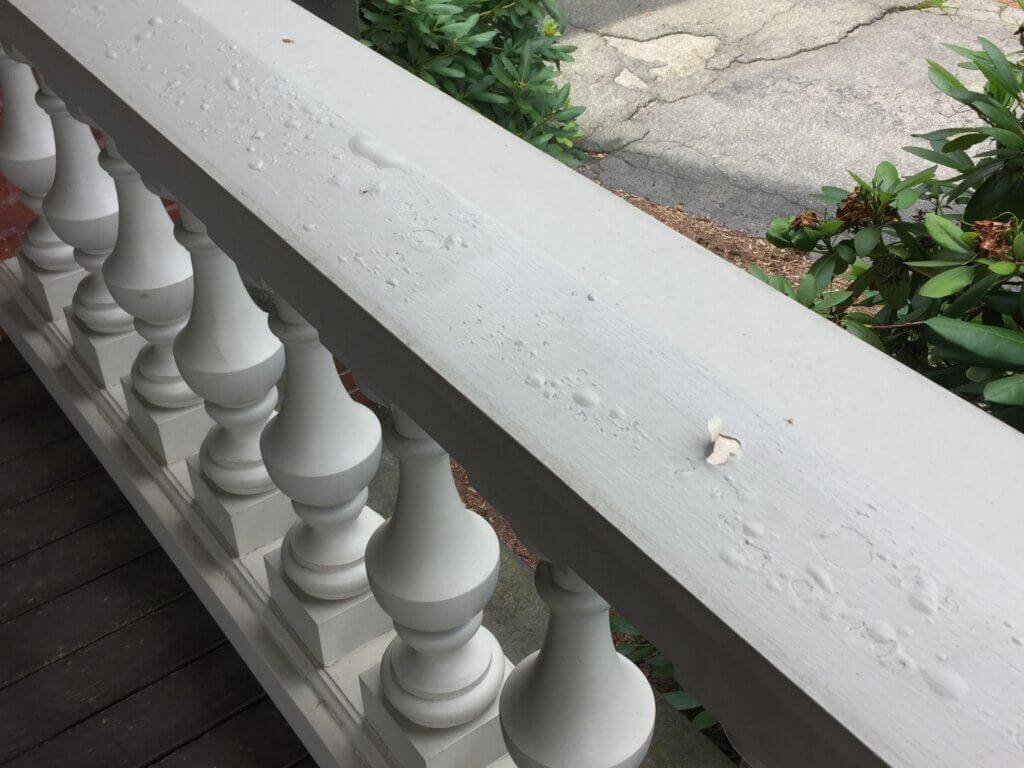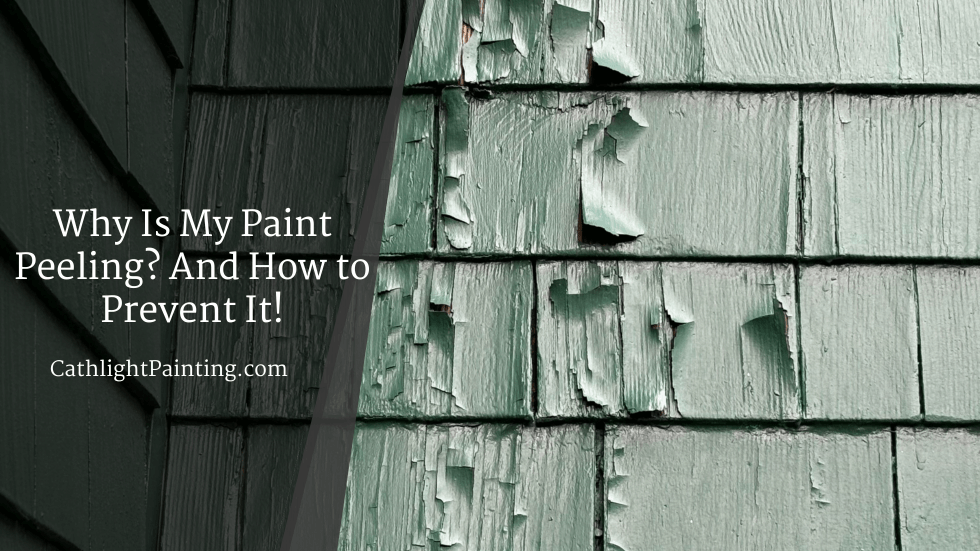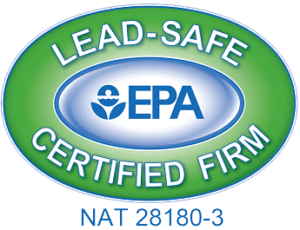Few things are more frustrating for a homeowner than peeling paint. You invest in a fresh coat, expecting years of beauty and protection, only to see it bubble, crack, or flake away. So why does this happen – and how can you prevent it from happening again?
At Catchlight Painting, we’ve seen it all, from 150-year-old Victorian homes with 15 layers of paint to brand-new construction with trim peeling after just a few seasons. The truth is, peeling paint almost always comes down to one thing: a loss of adhesion between the paint and the surface. But the reason that loss of adhesion occurs can vary.
Peeling on Historic Homes

Many historic New England homes have their original siding and trim, covered in decades of paint. Each new coat adds thickness to the paint film, which eventually becomes too rigid to move with the natural expansion and contraction of the wood. As the siding flexes with temperature and humidity changes, the hardened paint cracks. Once the surface is broken, peeling is inevitable.
This is why, in older homes, we avoid overpainting. Instead, we apply one coat where possible, two only if absolutely necessary, so we don’t build up unnecessary thickness that will fail sooner rather than later.
In some cases, modern acrylic paints can actually cause tension failures. Their tenacious adhesion to existing coatings can pull ancient, often 100+ year-old primers and stain cleanly off the wood beneath.
Peeling on Newer Homes

Peeling paint on newer homes is usually related to construction practices. Common culprits include the use of soft pine trim, unprimed wood ends that soak up moisture like a sponge, and the failure to back prime siding and trim, which leaves one side of the wood unprotected.
Moisture is the biggest enemy of adhesion. Even new construction can suffer when water enters through small breaks in the paint film. For example, we often see delamination down to bare wood near gutters and downspouts. Even with copper flashing and gutters in place, water overflowing during heavy rains can cascade down the siding, soaking clapboards and creating large blisters.
Environmental & Application Causes

Sometimes peeling isn’t about the wood at all – it’s about the paint application itself. The blisters you see may be the result of a topcoat being applied over a prior coat before it could fully dry. Often, this occurs when an oil-based topcoat is applied over an oil-based primer in humid or cool conditions. The primer may feel dry to the touch, but once the sun heats the surface, solvents trapped below continue to evaporate, causing blisters to form; one must always be cautious when painting in the heat. The only solution is to carefully cleave or scrape off the topcoat and allow the primer to fully cure before repainting.
Preventing Peeling Paint
Primer is the first line of defense against moisture. It should be applied to all six sides of a board to stabilize it and minimize absorption. Leave one side raw, and peeling is almost inevitable.
Another preventable issue is paint incompatibility – for instance, applying latex directly over oil without proper prep. Without sanding and priming, the two won’t bond, and peeling usually follows.
So, can peeling be prevented? Sometimes yes, sometimes no. On a house that wasn’t built or primed correctly, peeling may always require maintenance. But with the right prep, the right materials, and a painter who understands the science behind coatings, you can dramatically extend the life of your paint job.
At Catchlight Painting, we consider ourselves among the best painters in Boston. We don’t just paint – we diagnose and solve problems. Whether it’s moisture intrusion, paint incompatibility, or too many layers over the years, we address peeling at the source so your home looks beautiful and stays protected for as long as possible.



